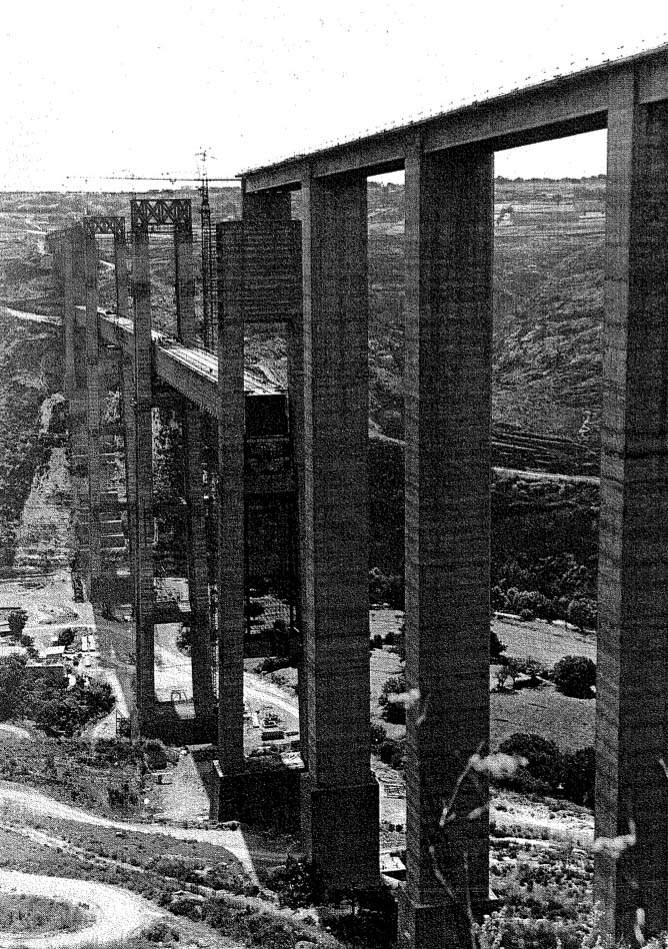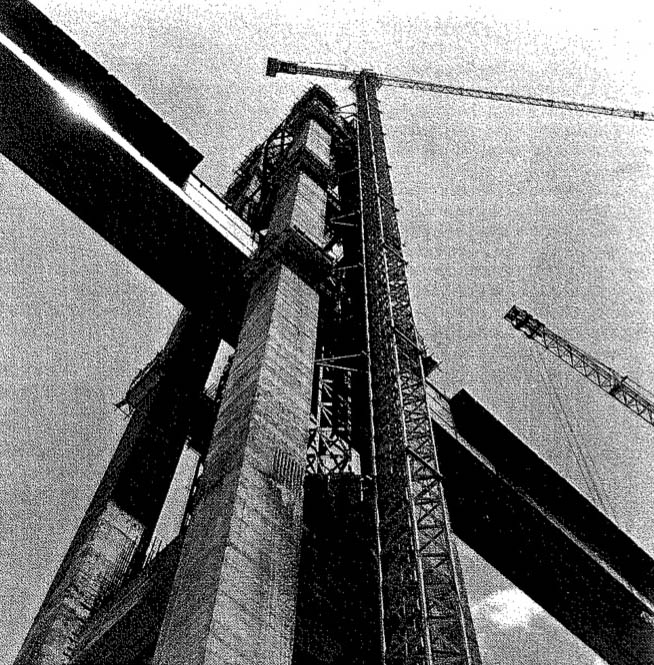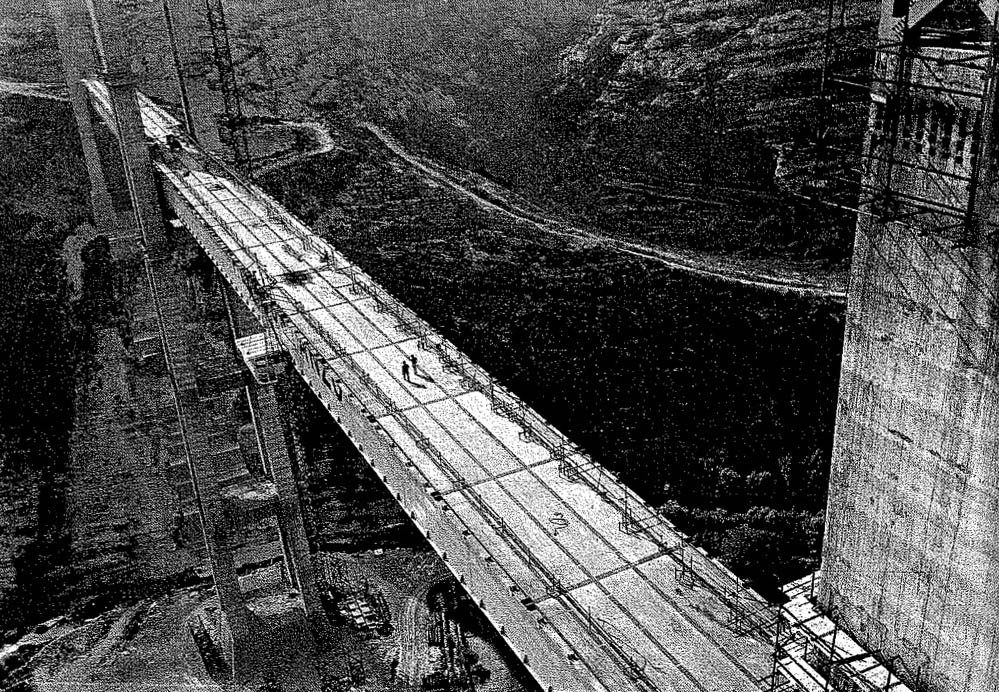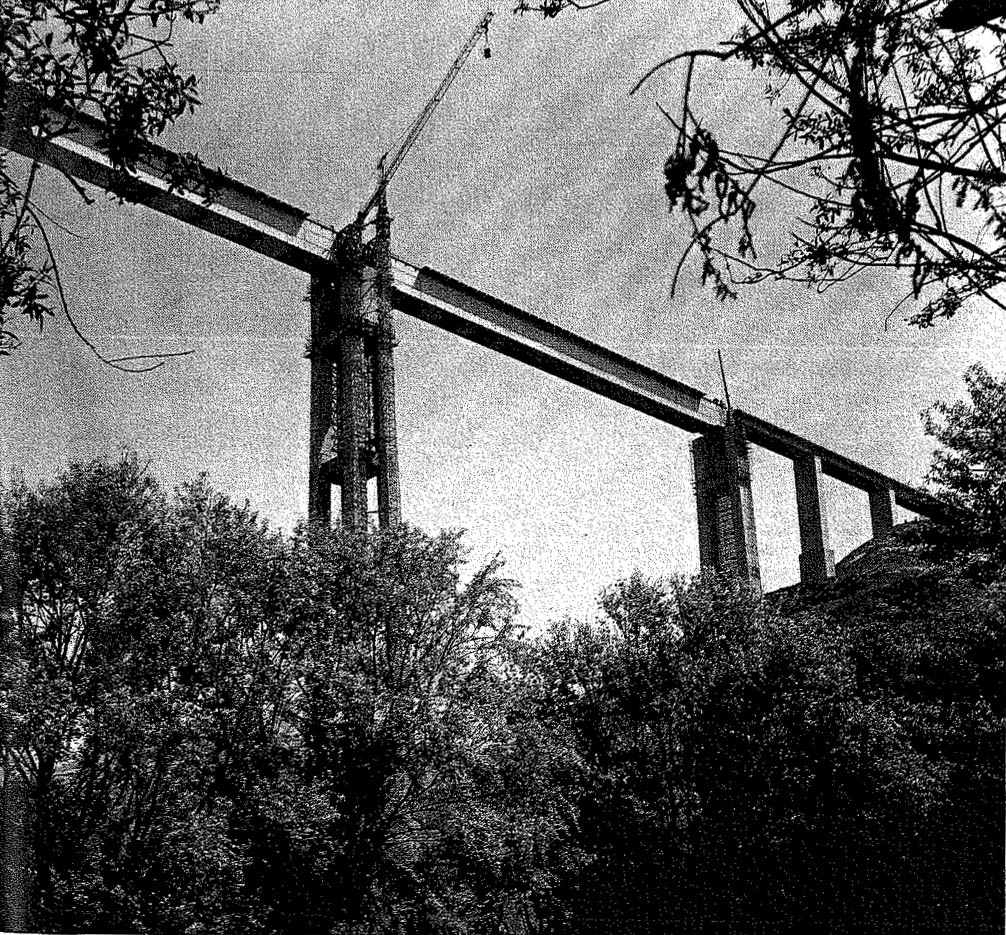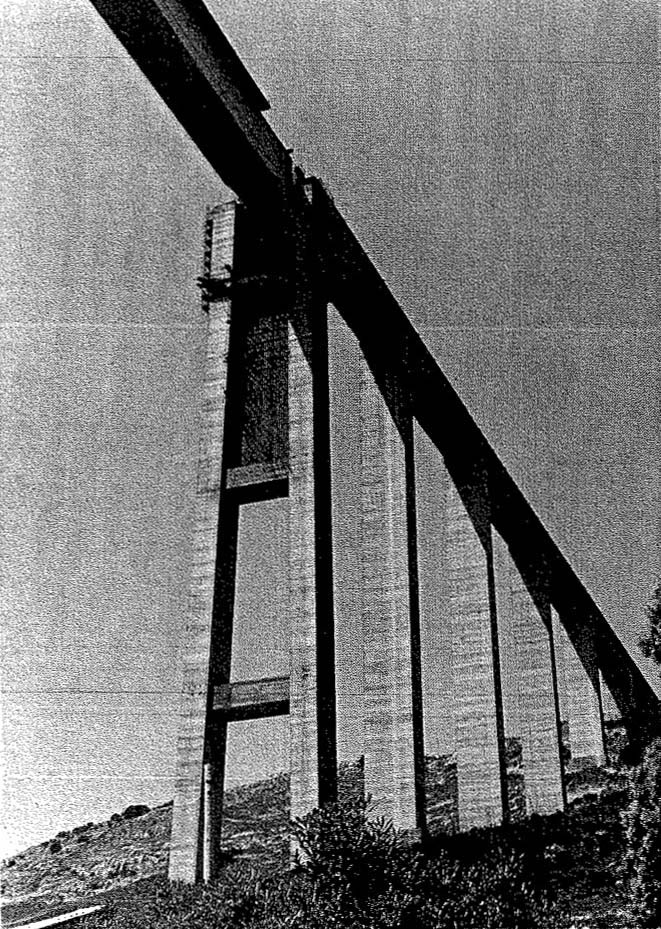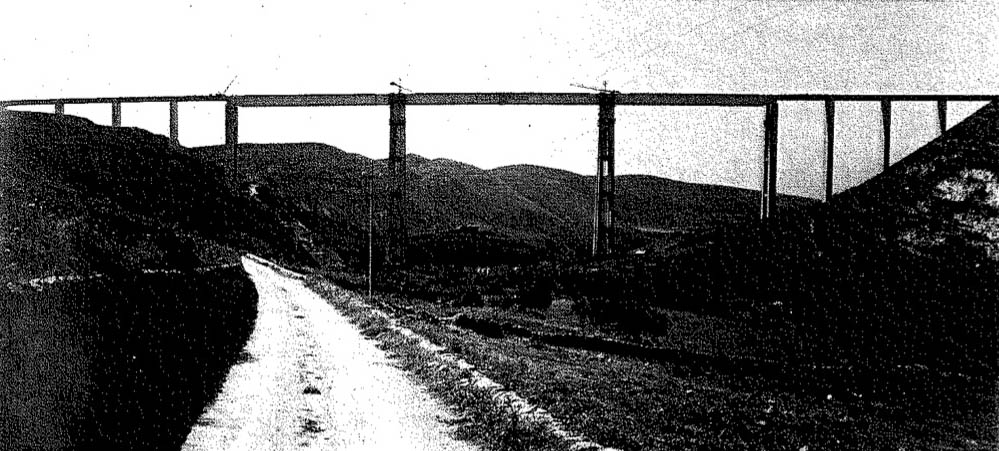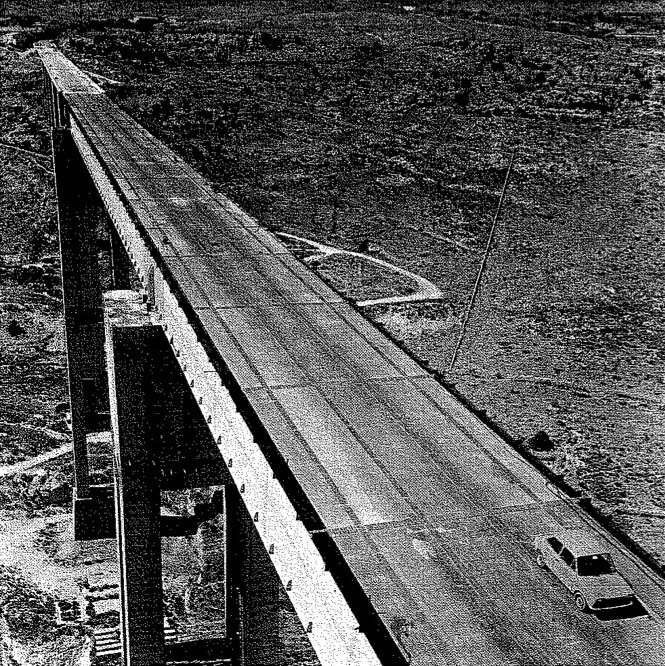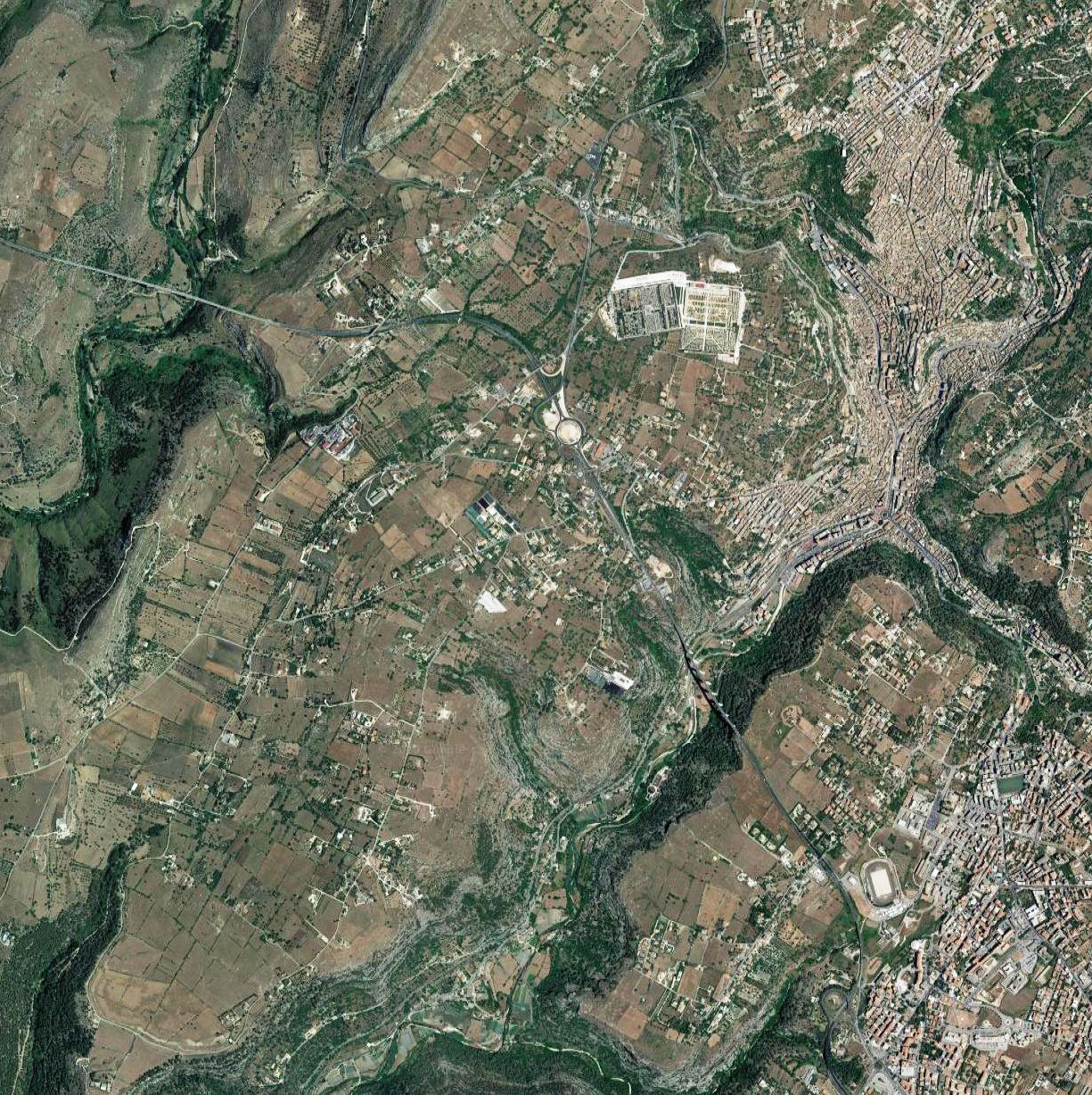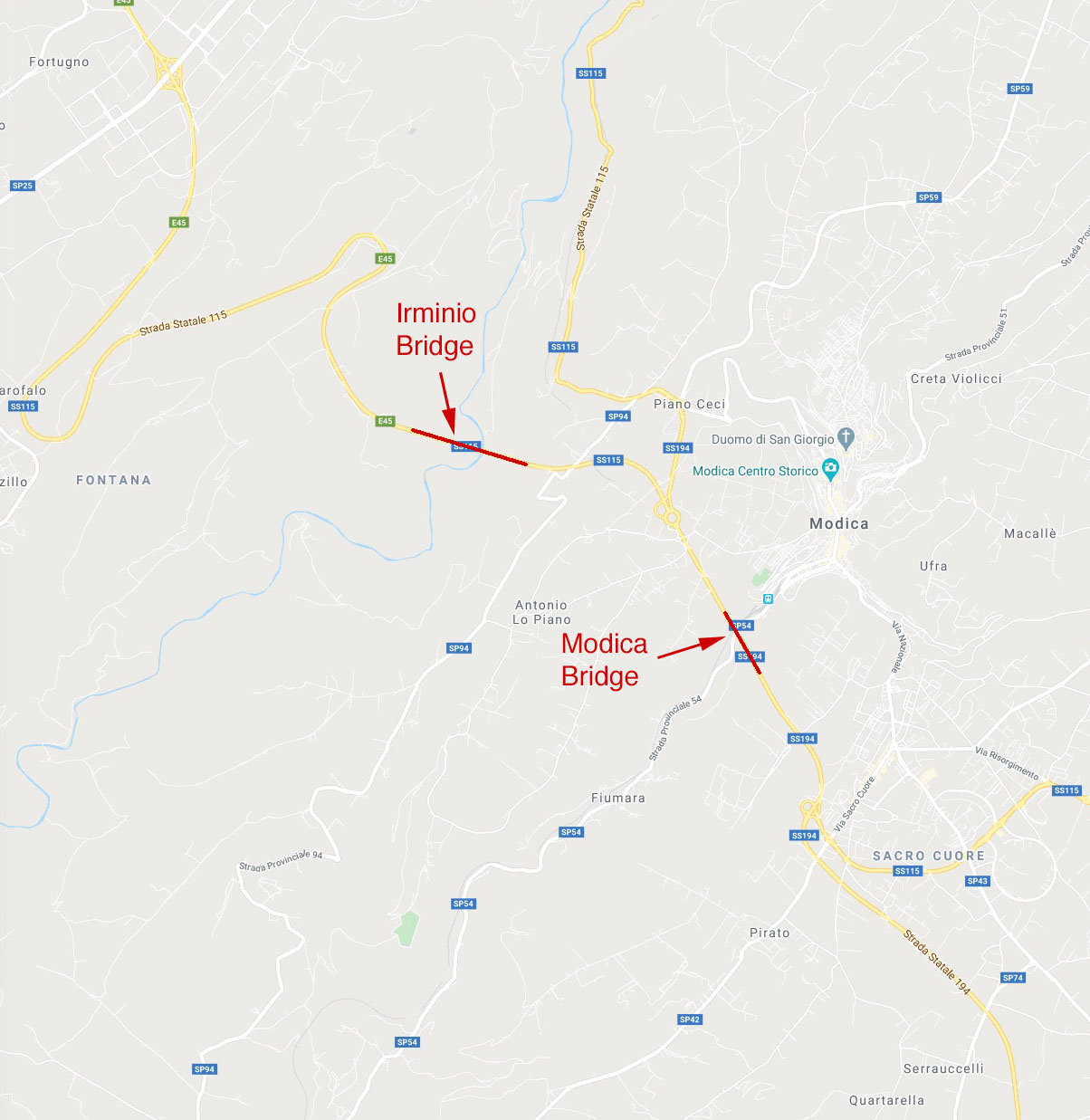Irminio Bridge
Irminio Bridge
Viadotto Irminio
Costanzo Bridge
Ponte Costanzo
Modica, Sicily, Italy
522 feet high / 159 meters high
571 foot span / 174 meter span
1984
The highest bridge on the Island of Sicily, the Irminio bridge is one of two towering viaducts near the Italian city of Modica on the island’s southern coast. Designed by famed bridge engineer Ricardo Morandi, the Viadotto Irminio is most unique for the method by which it was built. Like many classic Italian highway bridges of the 1970s and 80s, its construction involved the dramatic movement of some very large bridge pieces.
The largest structure on the Ragusa to Modica highway, the central third of the Irminio bridge consists of one massive continuous steel box girder 26 feet (8 mtrs) deep. Divided into 3 spans of 453 feet (138 mtrs), 571 feet (174 mtrs) and 453 feet (138 mtrs), the big beam sits on 4 tall piles. Two of these piers are among Europe’s 10 highest, rising 435 feet (132.5 meters) from the top of the foundations to the underside of the box beam.
Moving this 1,476 foot (450 mtr) long monstrosity from the ground to a permanent place 50 stories into the sky required a complicated procedure of jacking a continuously widening beam up the center of the piers as construction of the piers continued skyward one step ahead.
The process first began by piecing together 22 segments of the central section of the box beam on falsework just several feet (meters) off the ground. Once jacked up to a point about one third of the total height, 8 more sections on the right side were added from a second falsework on the shallow side of the valley. The jacking process continued again until the halfway point where a third falsework had been constructed on the steeper, left side of the valley with the last 8 segments of the box beam. Once completed, the entire 38-segment box beam was then jacked up to its final resting place at the top of the piers.
The huge girder is connected to 3 of the 4 piers by hinges that allow for thermal temperature expansion and contraction movements. The only fixed connection is to tower 6. The approach spans are more conventional with 4 prestressed reinforced concrete ribs 6.5 feet (2 mtrs) deep spanning an average of 157 feet (48 mtrs) between piers.
Despite the success of this innovative construction process, the dual use of the piers as both supports and as guide-rails resulted in a quad shaped design that looks more like a temporary bridge support than the permanent, timeless piece of engineering that is the hallmark of most of Morandi’s other bridges.
A simpler, more elegant crossing can be found just 2 miles (3.2 kms) east of Irminio in the city of Modica. Officially known as the Viadotto Guerrieri, the Modica Viaduct was completed in 1968 and was one of Italy’s first super tall, modern day viaducts with a parade of 394 foot (120 mtr) tall, closely spaced piers connected by simple, prestressed concrete deck spans. Now more than 40 years old, we can only hope this historic viaduct is preserved for another generation of high bridge fans to enjoy.
Irminio Bridge image from L'industria delle construzioni.
Irminio Bridge image from L'industria delle construzioni.
Irminio Bridge construction sequence.
Irminio Bridge image from L'industria delle construzioni.
Irminio Bridge image from L'industria delle construzioni.
Irminio Bridge image from L'industria delle construzioni.
Irminio Bridge image from L'industria delle construzioni.
Irminio Bridge image from L'industria delle construzioni.
Irminio Bridge image from L'industria delle construzioni.
Irminio Bridge satellite image.
Irminio Bridge location map.



